Do-it-yourself paths in the country from scrap materials
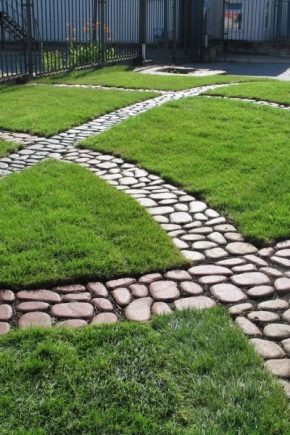
The cottage is used for gardening and recreation. For the convenience of moving around the site, transitions are needed that connect the outbuildings, serve to divide the personal plot into functional zones, facilitate caring for the garden, transport gardening equipment and crops on a wheelbarrow, and allow you to walk around the territory of the dacha in any weather.
Nicely arranged paths are perceived as an aesthetic accent in landscape design. This part of the exterior is easy to do yourself, knowing the styling features and using the materials at hand. Consider the basic rules for arranging paths and try to be inspired by various design ideas in order to embody the ones you especially like in our local area.
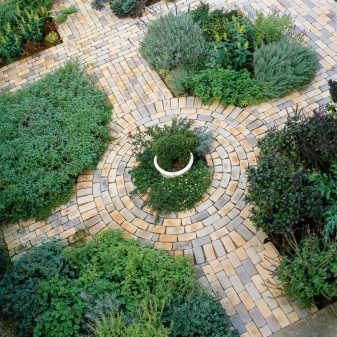
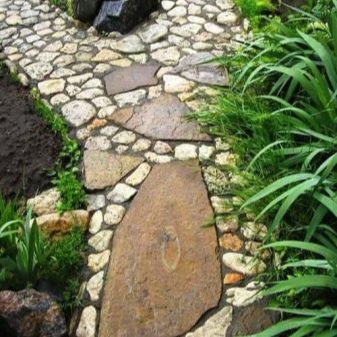
What to consider when laying?
The tracks differ in purpose and material requirements. The location of the pedestrian paths is taken into account at the stage of site planning. On the plan we draw functional zones: garden, vegetable garden, yard, utility block, entrance area, main house, buildings for pets and poultry. We connect them with the most convenient transitions. We choose either the shortest distance to the land use object, or the most aesthetic one, if it is a walking path. Often they use this technique: for one season they walk on bare ground and where the paths are trampled, there is the most convenient location.
Along the line of paths, paths are already being arranged.
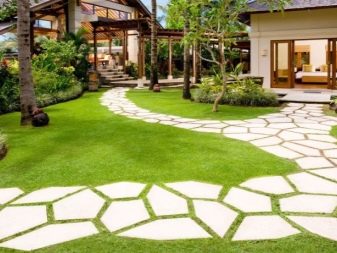
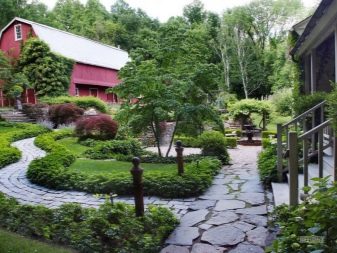
It is necessary to take into account the landscape of the site. It may be necessary to fill up the soil somewhere, and cut off an unnecessary hill in other places. Walking paths should be laid using uneven terrain. It is pleasant to go up the hill and see a sprawling garden or park. Designers prefer the effect of turning: a straight section is replaced by a sharp turn, behind which there is either a beautiful gazebo, or a specially decorated corner of the garden, or a waterfall surrounded by a pond.
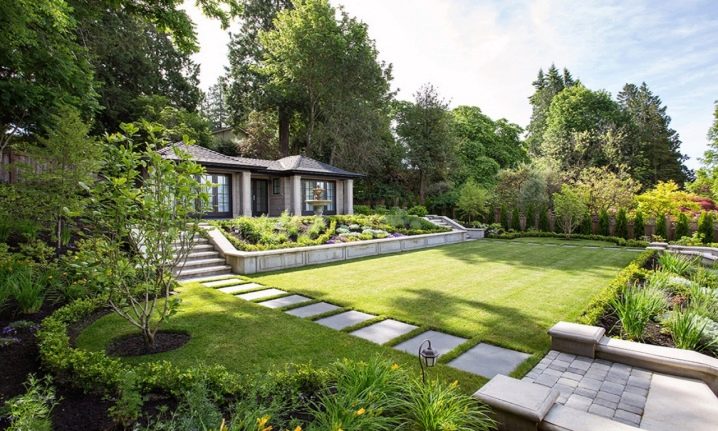
It is recommended to equip straight paths in economic zones for the efficiency of work in the garden or the convenience of caring for a bird. In the area of a garden or park, winding natural lines are better perceived. An elongated narrow section can be visually expanded by placing the track along a sinusoid or zigzag across the territory. Straight paths going into the distance will visually lengthen the space of the cottage.
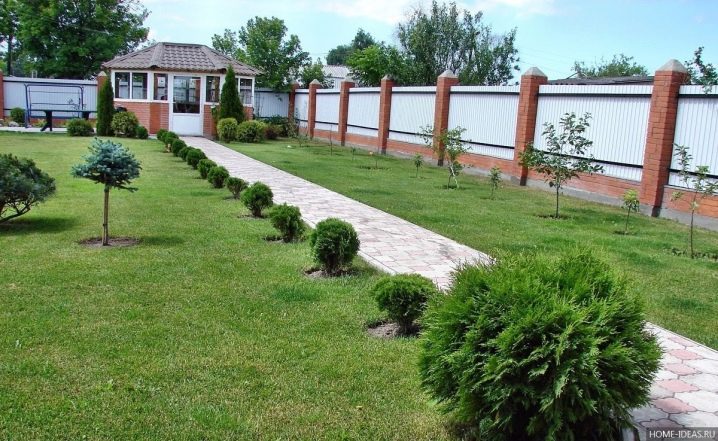
The path should not rest against the fence. It is better if it ends with an entrance to a building or a gate. You can equip the false gate with an arch entwined with flowers, in this arch it is not bad to place a bench, then the path will be logically justified and completed.
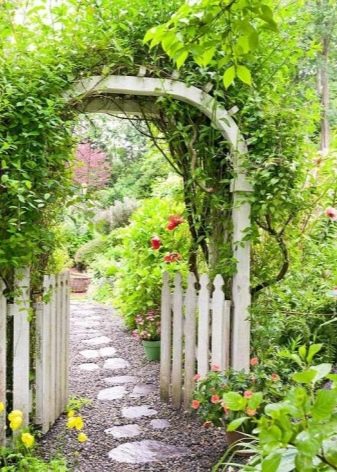

The list of mandatory works according to the technical requirements for the arrangement of paths includes digging a trench, tamping the foundation with a bed of sand or crushed stone. Such a litter protects the path from subsidence of individual sections of the material and prevents overgrowing with grass.


The device of the track assumes the presence of drainage so that puddles do not form on the canvas. It is usually sufficient to make the edges slightly below the middle. In section, it looks like an arc. This will allow the water to drain from the center and the track will always be dry.

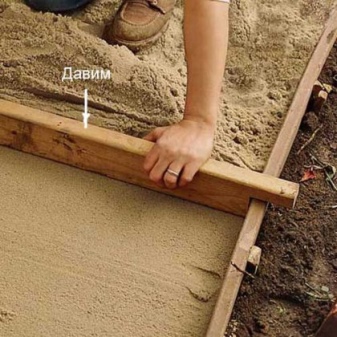
It is important that the width of the track is sufficient. The minimum width of the summer cottage path should be at least 80 centimeters so that a loaded wheelbarrow can be freely moved around the site for the necessary work.
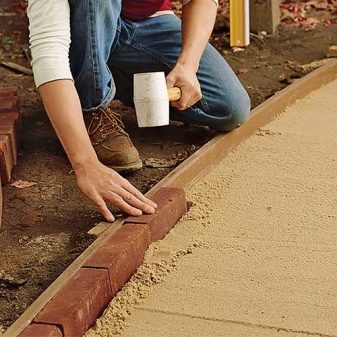

The height of the path without the curb should be level with the ground, so it is more convenient to mow the grass and the path will always look neat.
The path protruding from the ground will not allow doing this, and the grass will have to be cut off with a special hand tool separately, this is not always convenient.
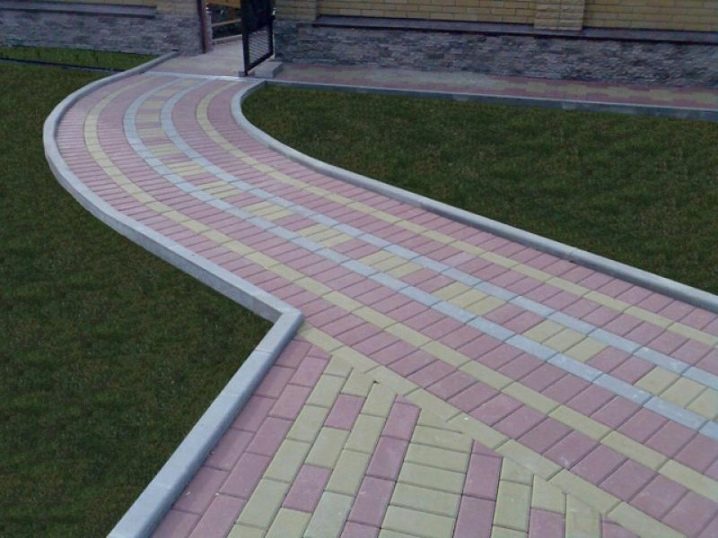
Popular materials
The material chosen for the tracks is not slippery and resistant to temperature extremes in winter and summer. In the front area and in places of frequent visits, it is better to choose a more wear-resistant stone or tile; in the park area, you can give preference to sand, wood cuts, crushed bark.
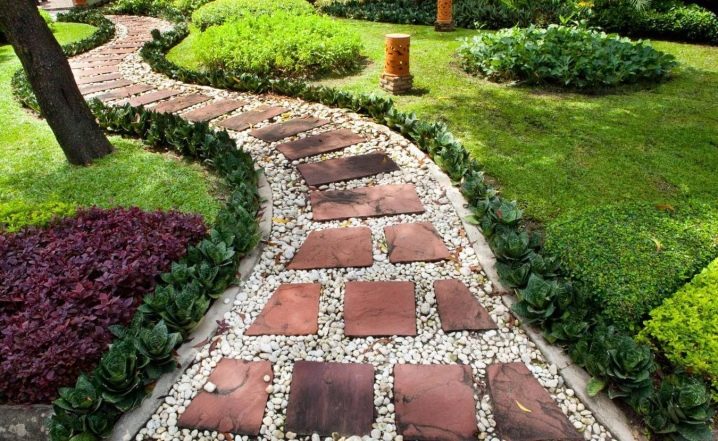
Concrete
The most inexpensive and durable paths are made on a concrete base. To do this, a trench 15-20 centimeters deep is dug, a layer of crushed stone about 5 centimeters high is poured onto the bottom, a reinforcing mesh is laid, a layer of sand 5-7 cm is poured, formwork is made from the lath and installed along the edges of the trench. Instead of formwork, if desired, you can immediately install curbs if they are planned initially, but such a path is strong enough without borders.
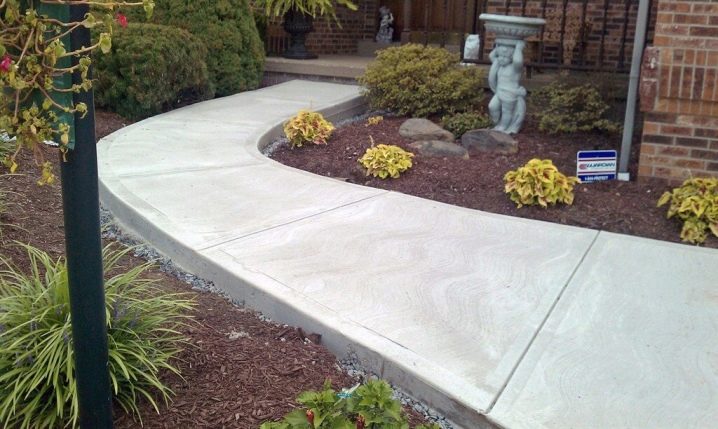
A cement mortar is prepared in the following proportions: for 1 part of cement, 1.5 parts of sand and 3 parts of gravel are needed, water is added slightly less than 1 part until a semi-liquid mass is formed. This mass is poured into the formwork, observing a slope from the center of the path to the edges for drainage. They are leveled to ground level. The track can be used in this form, but for 3-4 days it is better to cover it with a film for even setting of the cement.
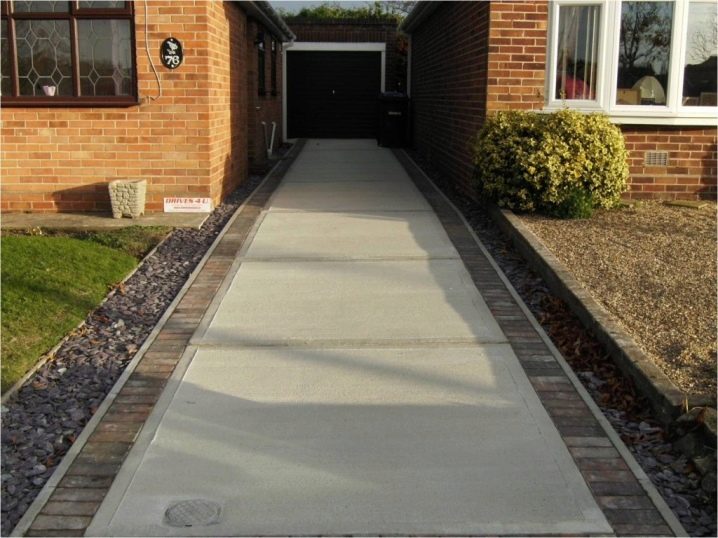
These tracks have increased strength, it is good to use them in the economic zone and in the area of access roads. This material practically does not corrode, withstands heavy loads, but from an aesthetic point of view it looks somewhat monotonous.
For decoration, it is worth acquiring a mold for casting parts from cement and already with these elements lay out the canvas of the path.
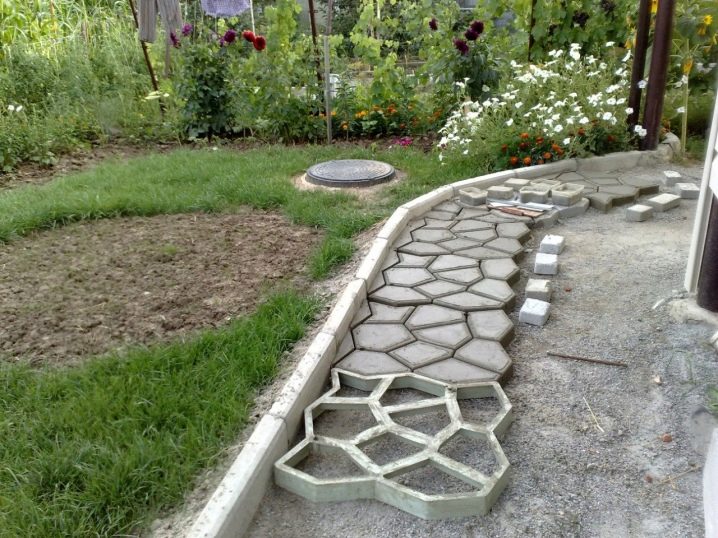
Pebbles
If desired, decorate the surface of the path with various natural finishing materials that are in your area, for example, pebbles or shell rock. They can be pre-painted in various exterior paint colors.
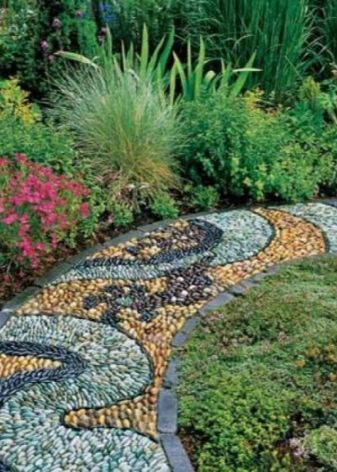

You can leave the stones in their natural form. You can buy pebbles, or you can collect them in the area, however, this will take time, but this way you will usefully spend time in nature. The decor is laid out either chaotically or in the form of a pattern.
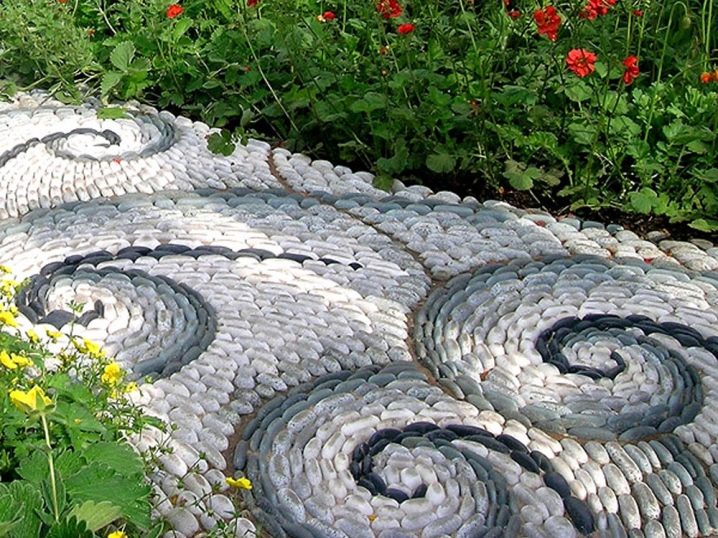
It is worth making a beautiful and utilitarian path in the country house from fragments of unnecessary ceramic or faience tiles. It is good if these tiles are of different colors. Many of them have remnants of tiles after repairs, which are a pity to throw away, perhaps friends have a couple of tiles or cracked pieces. Everything is collected and formed like a mosaic. It's good if the pieces are of different sizes. The base is prepared, as in the first case, but fragments of the tile are pressed into the not yet solidified cement.
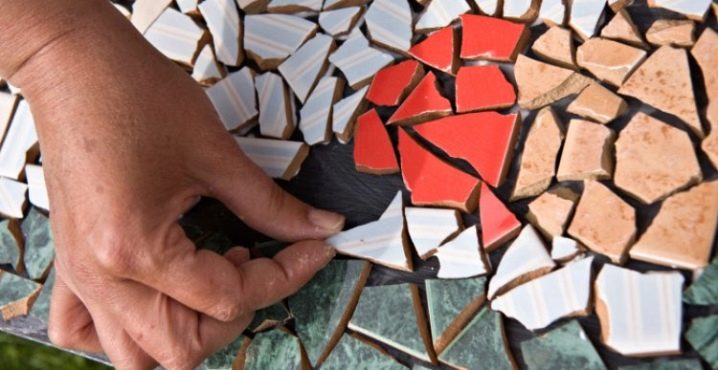
Such garden paths made of improvised material are durable, well insulate from moisture, are not destroyed by frost, and are a bright accent in the design of the cottage.
Plastic bottles
On a concrete base, decorative finishes are made from a variety of materials. If your family loves carbonated drinks, then do not throw away the bottles or collect the caps from them, you can ask for a plastic container for drinks at the nearest catering point. Various parts of plastic bottles are used for decoration.
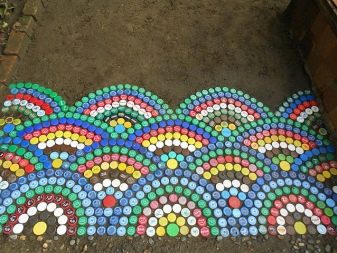
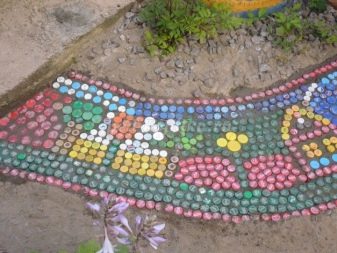
The brightest and most beautiful paths can be made from multi-colored covers. It will take a long time to collect on a long dacha path, but everyone can arrange some areas with their own hands. Covers are pressed into the prepared concrete surface, placing them harmoniously in color.
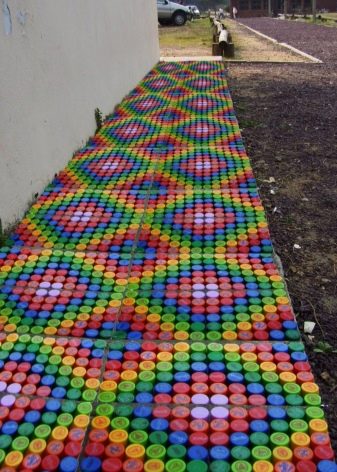
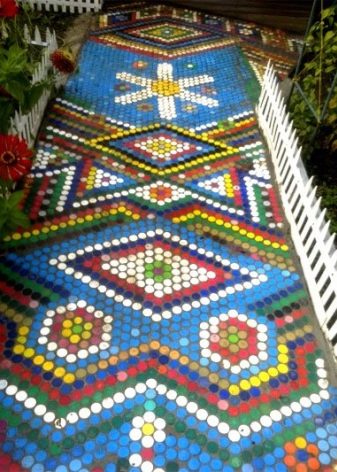
Another way to decorate is as follows: cut the bottom of the bottle to a height of 5 - 8 centimeters and bury these glasses in a concrete screed. Even if the plastic breaks off over time, a beautiful flower of frozen cement will remain on the surface.
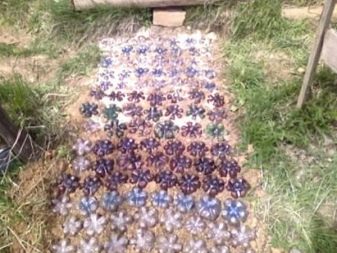
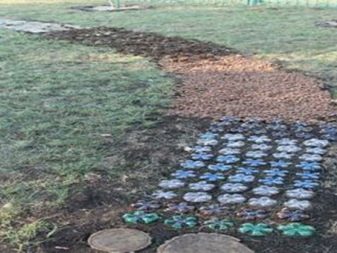
For the device of the track, a whole plastic container is sometimes used. The bottle is filled with sand, placed in a dug trench with a sand cushion, the cracks between the bottles are filled with very fine gravel or sand. Glass bottles are also suitable for such purposes. Glass or plastic creates multi-colored reflections in the sun and has a very picturesque appearance.
The coating turns out to be unusual and elegant, children really like it. The plastic surface is always warm, but it can withstand a small payload and the material easily deteriorates from mechanical damage. The decor of the caps is well combined with the borders of the bottles installed upside down.
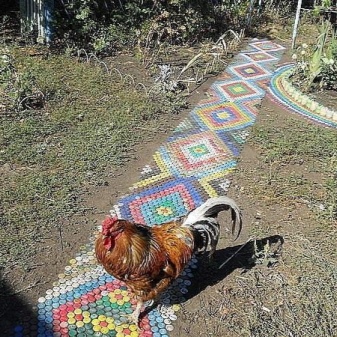
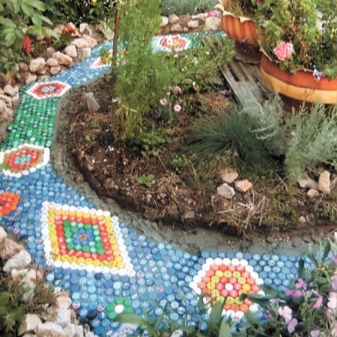
Brick
Remnants of bricks can be found in the country, they can also be used to build approaches to a house, a barn, a bathhouse.
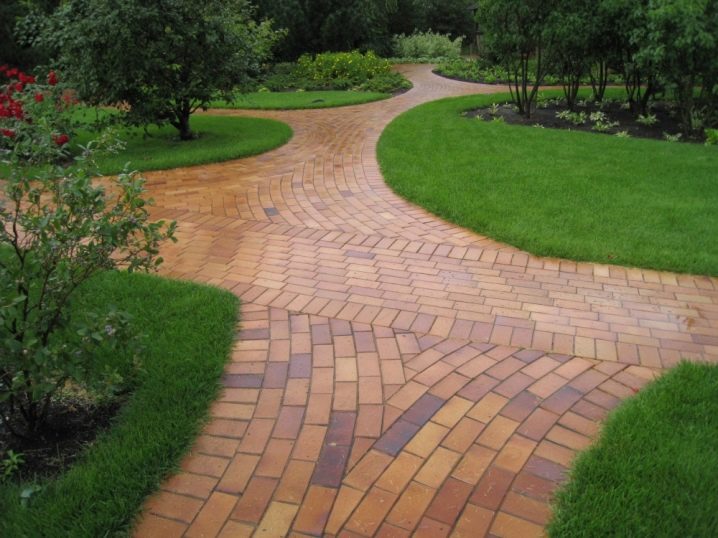
The manufacturing technology of such a trail is somewhat simpler than that of concrete. A trench is dug for a bed with a depth of 15 centimeters, a pillow of sand 5 centimeters thick is poured, compacted, bricks are laid on the sand, not forgetting to make a slope to the edges. They cover it with sand from above, spill it with water from a hose, after the sand settles, add it again, spill it again. This procedure is carried out until the sand fills all the cracks to the top of the bricks. The coating turns out to be very durable, frost-resistant, warms up well in summer, it is pleasant to walk on it barefoot. An important role here is played by sufficient compaction of the brick so that a flat surface is maintained and the edges of the bricks do not stick out of the canvas.
If there is a whole brick, it is laid out like inlaid parquet.
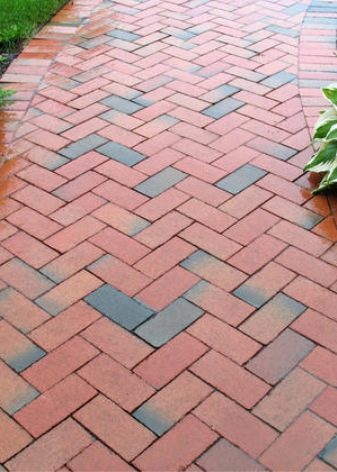
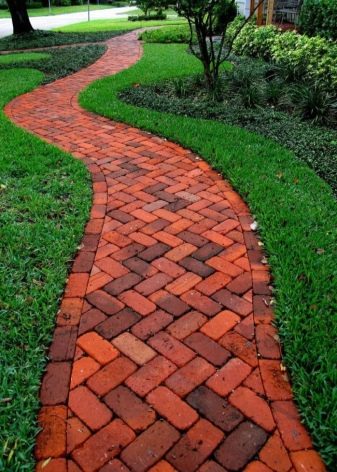
A budget option is to use broken brick. This may remain after repair work or be a waste of construction. Pieces of brick are carefully picked up along the chips and laid like a mosaic.
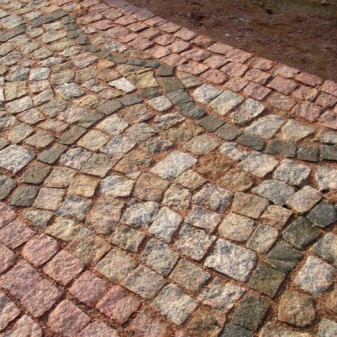
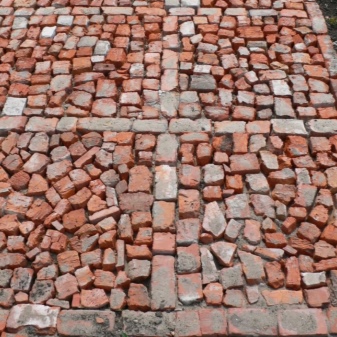
The option using bricks of different colors: white and red will look even more interesting. The coating looks aesthetically pleasing. Brick is one of the most resilient materials, but for driveways, of course, it is a fragile coating. But for pedestrian and bike paths, it will serve for many years.

Wood
Wooden paths are one of the most popular in summer cottages. This is an affordable and beautiful natural material. Natural wood surface attracts with natural color and interweaving of wood grain, it can be tinted in various shades. In the summer heat, such a coating cools the feet, and in the cold it has a pleasant surface temperature. It is useful for children to play on wooden paths, they will not get dirty or catch a cold. The aesthetics of the wood flooring match the aesthetics of the natural-style site.

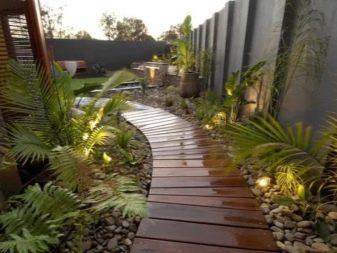
Such paths are made of boards. A frame is built on supports from wooden or metal posts, boards are sewn onto it. The space between the ground and the covering is ventilated and prevents the tree from rotting. All wooden parts must be treated with an antiseptic.
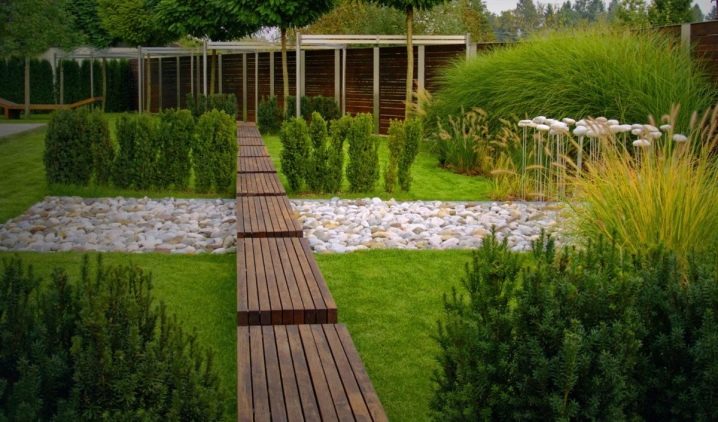
Alternatively, wooden sleepers are placed on a crushed stone cushion. A shallow trench is dug, covered with a layer of sand, the space between the boards is filled with stone. Here you can not make a clear boundary between gravel and forbs. It is good to walk along such a path to a pond overgrown with sedge, touch the branches of apple trees, bent under the weight of apples.
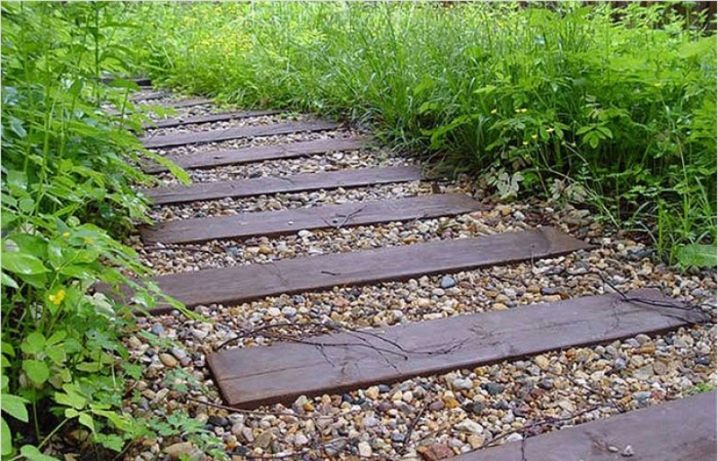
The tree, as a rule, is the main element of the landscape composition.
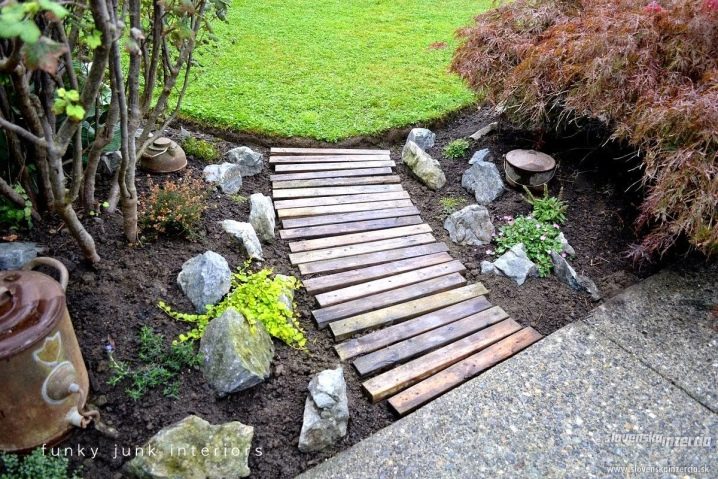
However, a processed board is a rather expensive material, therefore, wood cuts are used much more often for the construction of paths. They can be of different sizes and heights from 8 to 15 centimeters. The installation technology is quite simple: a trench 20 centimeters deep is dug, a sand cushion is compacted, hemp is installed and the gaps between them are filled with crushed stone, pebbles, sand. Wood cuts give an intricate pattern of wood rings, are environmentally friendly, inexpensive, easily replaced when destroyed.
Wood of any tree can be used, but it requires treatment with means to protect it from moisture.
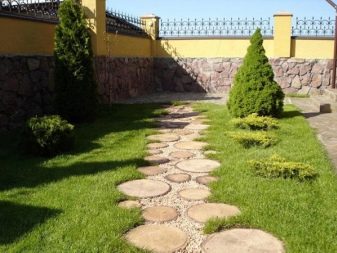
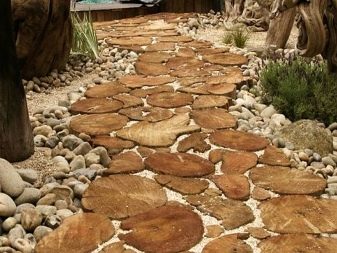
Car tires
The rubber coating from car tires is practically not exposed to environmental influences. The easiest and most practical tracks are obtained from trimmed tires, the straight part is straightened and laid directly on the ground. Such paths, if necessary, can be moved to another place, they are irreplaceable in the garden for the passage between the beds or in areas intended for keeping pets.
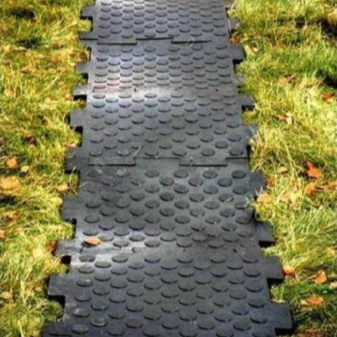
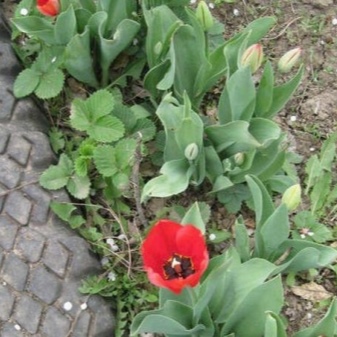
Other means
In some areas there is an overabundance of any natural material that can form the basis for garden paths. If there is a coniferous forest near you, you can probably collect bark there. This material, poured in a thick layer, is quite durable, has a beautiful texture, it allows moisture to pass through well, remaining dry; if the coverage area fails, it can be easily replaced with fresh bark. The manufacturing technology of such a track is very simple - a trench is set up with a depth of 10-15 centimeters, a layer of sand is poured and compacted, and the rest of the space is filled with bark with a layer of about 10 centimeters.

More resistant to moisture and carrying a large payload is a pavement of crushed stone or sand. The arrangement technology is the same as in the first case, only fine gravel, crushed stone or sand is poured instead of bark. With the correct equipment of the pillow, such paths serve for many years, but it is better to protect them with curbs.
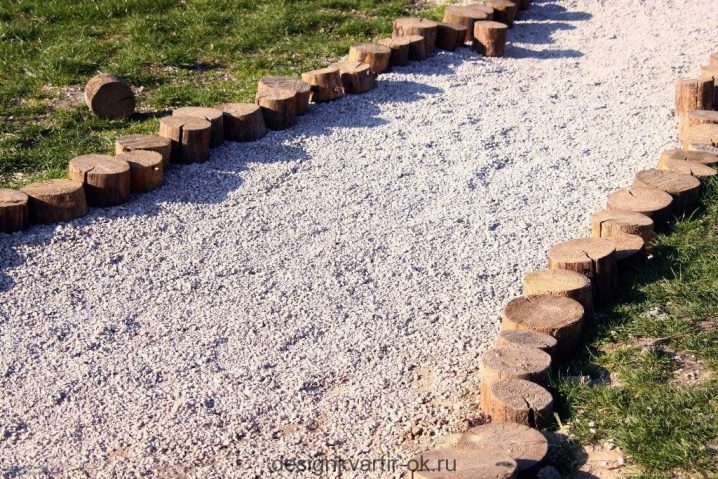
There may be cobblestones nearby. The paths from them have a fabulous look, are durable and adorn the landscape of the site. For the construction of such paths, stones are laid in the trench on a cushion of sand with the flat side upward so that the surface is as even as possible. The gaps are filled with sand or fine gravel.
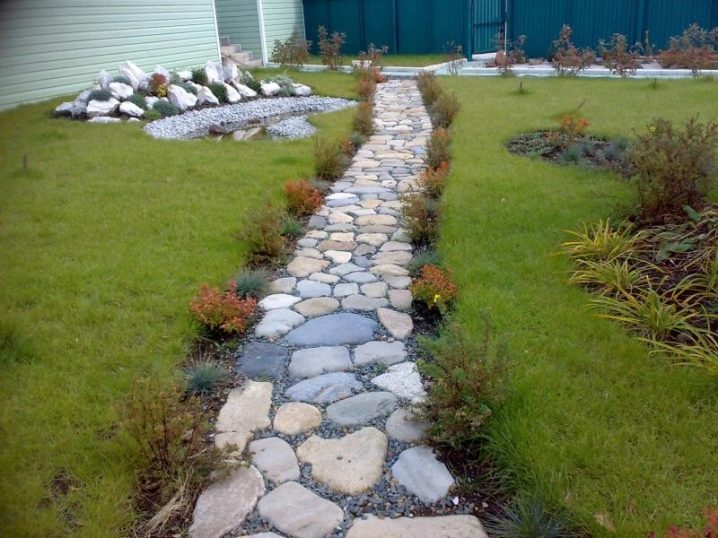
For the summer period, some site owners cover the paths between the beds with strips of linoleum, but it must be borne in mind that raw linoleum is very slippery and you can get injured while moving on such a surface.
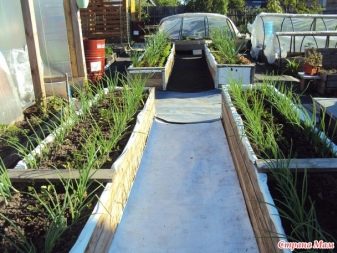
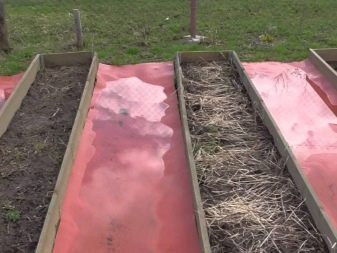
The tracks on the site can be combined - in the front area they are more durable and wide, in the far parts of the garden they narrow to a small path made of bark or sand, in the recreation area they are distinguished by a special aesthetics of execution.
A border of flowers will decorate a canvas made of any other material.


In any case, making tracks with your own hands is a very exciting and creative process. You can involve family members to find suitable building materials for artistic decoration and patterning. This will bring the family together and bring the joy of creation.

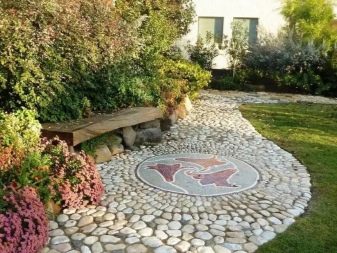
Ideas for inspiration
Let's get acquainted with how professional designers decorate this element of accomplishment.
The tracks do not have to be filled with a solid canvas. In the garden part, where the load is less, you can make a fragmentary path in the lawn canvas.
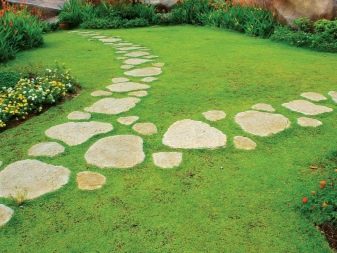
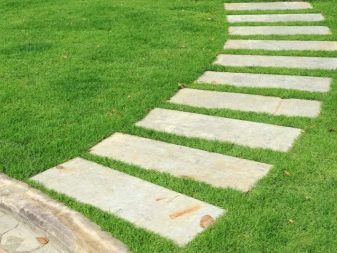
Pebble mosaic.
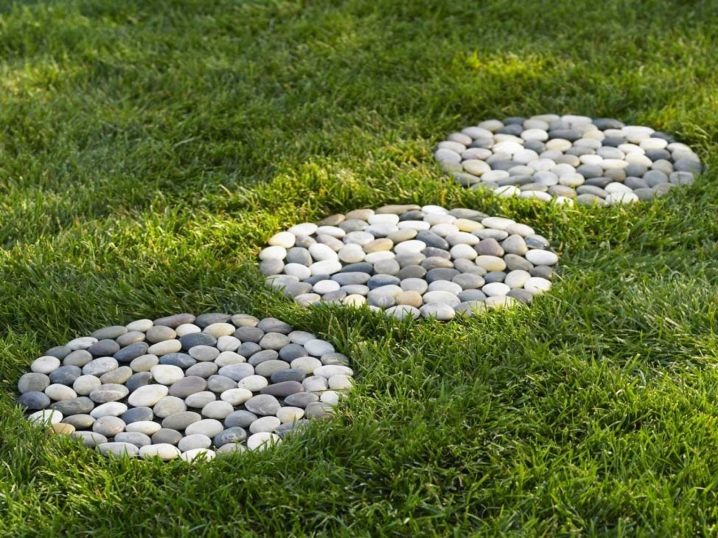
Tile mosaic.
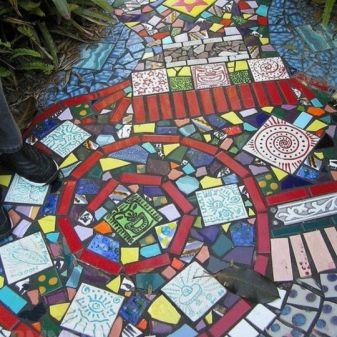
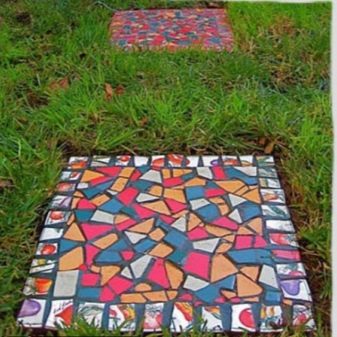
Beautiful paths adorn the most varied parts of the site and are an element of the landscape design of the backyard territory.
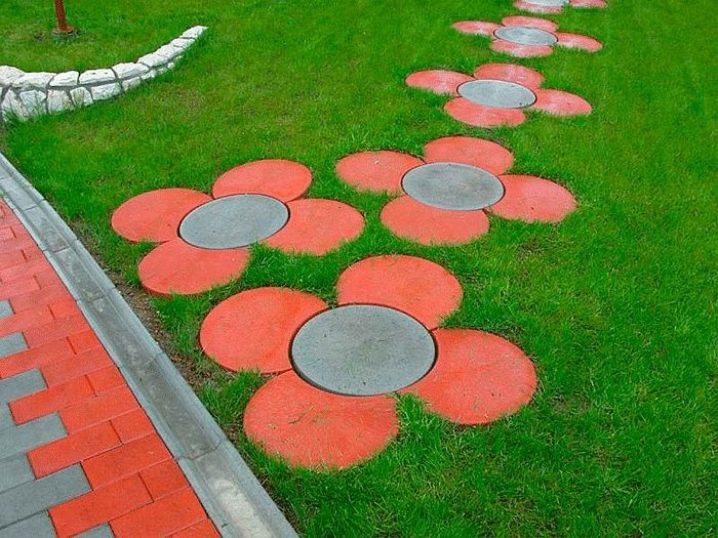
Lighting plays a significant role in the perception of space. Thanks to him, the simplest coating will become the highlight of the summer cottage in the evening.
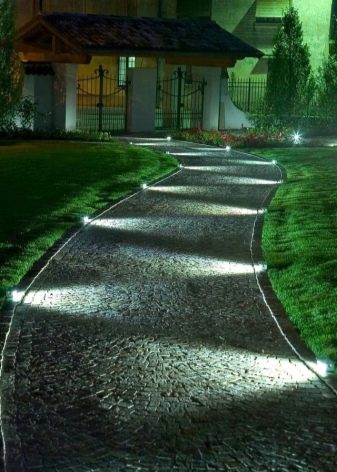
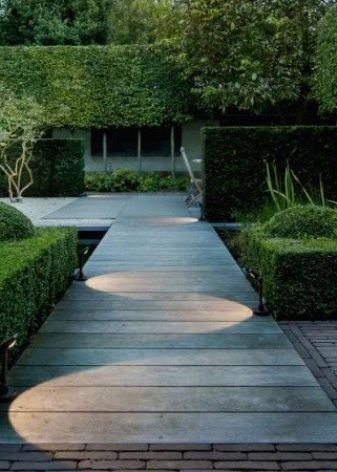
It is worth inserting artistic details or floral ornament into the coating canvas.
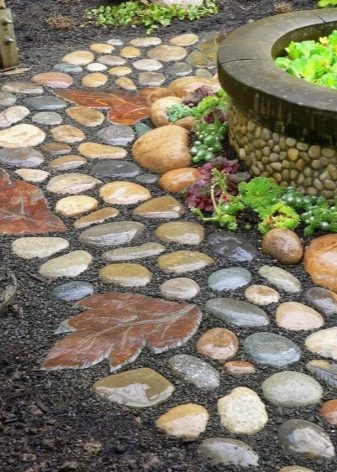
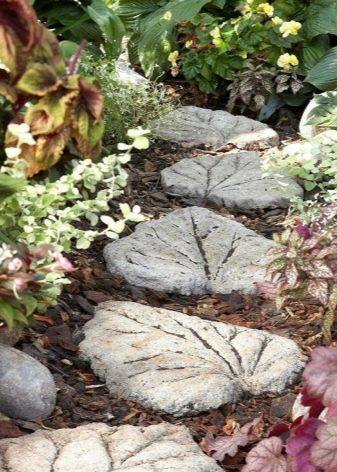
For information on how to make a beautiful track with your own hands, see the next video.



































































The comment was sent successfully.